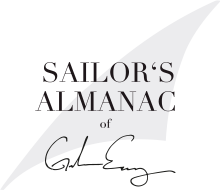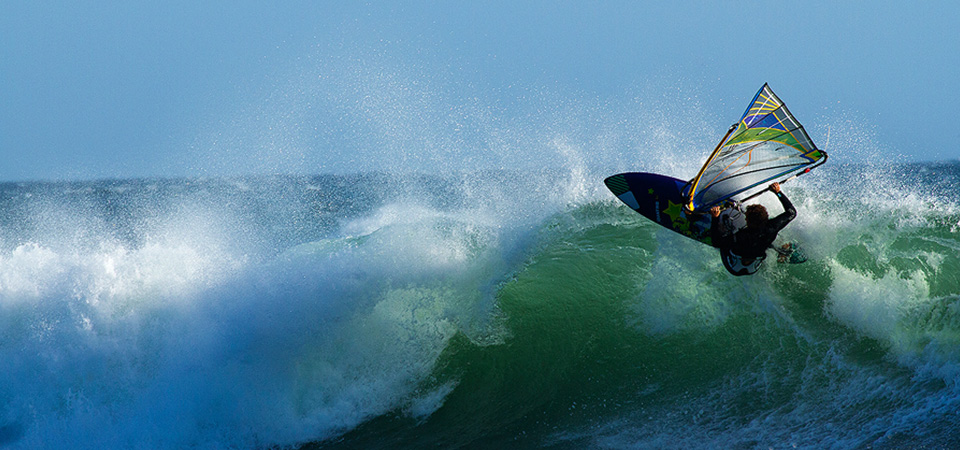California Dreaming
(Originally published in Windsport and Boards.)
part 1
Did you find what you’re searching for?
Almost.
Will you keep searching?
Always.
Everyone wants a sure thing. An easy bet. We windsurfers try to make forecasts our ace-in-the-sleeve, the weighted die. I check windguru on my computer; I check iWindsurf on my phone. In short: I want wind and waves; I don’t want to arrive at the beach to wait around. Waiting is for suckers. Waiting is for the people not cool enough for the bouncer to lift the red rope.
But, you can’t argue with the weather. The sometimes-heard statement, “I don’t know what happened. It was supposed to be windy today!” makes no sense. The wind knows no obligation. We do not ever know the truth about the wind.
A forecast from a reliable source offers something more valuable than truth: confidence. What can you do with truth? I’m not sure. But confidence allows you to act. Confidence allows you to say, I’ll do A right now to probably get B in the future.
Time is important here. You should not book a trip based on a forecast for 10 days away. But if windguru says it’s going to blow thirty this afternoon, you should probably drive to the beach. The closer to the present a forecast is, the more confidence you can have in it.
If you’re a windsurfer looking to score, your life is one of last-minute trips. A day before we left Maui, Kevin Pritchard made the call to go to California to catch a South Swell. We rolled the dice.
It was a plan-the-day-before trip. My new boards weren’t finished, and my current favorite board was still at the ding-repair guy. It wasn’t finished either, which meant that it was spotted in grey primer paint. No matter--a pretty board doesn’t turn any better than an ugly one.
Bags packed, I flew to LAX where my brother picked me up, and we drove to North Hollywood to buy a 14 year-old Nissan Pathfinder for my road trip with KP.
Kevin arrived the next morning; I picked him up in our Pathfinder and we drove North to a beach once famous for windsurfing but long since fallen off the radar: Jalama. A beach known for heavy sand-bar waves with a tendency to break masts.
We camped the night (I slept in the car and KP in a tent) and waited for the waves and wind predicted. The dice were thrown—ours and Fate’s.
There is a legend from Scandinavia about two Kings playing dice for possession of an island between their kingdoms. One of these Kings has recently converted to a new religion spreading to the region: Christianity. The Other rolls first and the two dice turn up two 6s—the highest score possible. He tells the Christian not to even bother rolling for he probably would not be able to beat the double 6. The Christian rolls and gets a double 6 himself. The Other rolls again to break the tie: double 6s, again. The Christian matches it with his own set of double 6’s. On the 3rd roll, the Other again gets double 6’s. The Christian rolls, the dice land with 6’s upright, but one of the die breaks and the broken piece shows 1 spot. So, the Christian has a final score of 13, unprecedented in dice and able to beat the Other’s 12. The Christian uses God to explain his extremely good—and unexpected—luck.
We windsurfers do the same thing, but our God is not a Christian God but a wealth of models and theories on pressure systems. When something unexpected happens—like a surprise onshore 20 mph breeze on a day predicted to be windless—we are quick to throw an explanation behind it—“Oh, that’s a sea breeze because the land is hotter than expected”. And it is to these models and theories that we pray.
We play a game against Fate. She rolls the dice against us.
On the morning of our first day at Jalama, there was no wind at all. There was no cell-service either, meaning no access to updated forecasts and current wind readings. We drove 30 minutes back towards civilization before the phones began to buzz.
We parked outside an old farmhouse and prayed to the gods of forecasts and current wind readings. The iWindsurf sensor was not picking up much wind at Jalama but it was already blowing 30mph only 3 hours up the coast. “Do we ditch Jalama for a sure thing or roll the dice and stick around?” we asked.
Like everyone, we wanted as close to a sure thing as possible. So we stayed outside that farmhouse—the owner of which kindly came out and asked if we needed assistance—and waited for updates from the sensors and the models. We even called Brian Caserio for his interpretation on the models—a sort of local wind priest.
Brian said we should stay at Jalama, and that he was already driving toward us from his home in Central CA.
We decided to stay at Jalama, but we didn’t leave the farmhouse right away; we wanted one more iWindsurf refresh just to be sure.
The next sensor reading showed a spike from an average of 3mph to an average of 20. The models answered our prayers. We didn’t know it yet, but Fate had rolled a 12 and we got our 13—some of the most intense wind and waves I’ve ever seen or sailed in.
I rigged a 4.5 and KP rigged a 4.7. After 20 minutes of sailing, I rigged down to a 4.2. After another 20ish minutes of sailing, I rigged my smallest sail, a 4.0. And I cursed that I didn’t bring smaller. KP was now on a 4.2, his smallest sail.
The sets were as tall as our masts. And plumes of water rose seventy feet into the air. The wind tore at the surface of the sea, shredding the top of the whitecaps to horizontal sea-spray.
Between the 50+ offshore gusts, the wind was calm.
The sailing at Jalama that day was some of the most technical sailing I have ever done. KP has 8 world titles and has sailed spots all over the world. We have both sailed Jaws. This was way harder than any of that. It wasn’t so much scary as it was hard.
We ended the day bruised but not beaten. Embarrassed that we hadn’t pushed harder, but proud to have handled such tough conditions. We were victorious but barely. Tired and windworn, we found a motel an hour away rather than camp at the beach as we did the night before. We wanted to be rested and ready for come-back battle with Jalama the next day.
And come back we did.
On day 2, we rigged our smallest sails right away and attacked the lips. Fear? Nah. We were too embarrassed from the day before to be scared. The beatings from the day before made wiping out undaunting.
Part 2
After two days at Jalama, KP and I journeyed up the coast to sail at Arroyo Laguna with our wind-priest Brian Caserio.
Rocks are scary in the waves. In fast moving water, a human body is helpless. Even the fastest swimmer is no match for a current. If you fight the sea, the sea will win. Full stop. There is a story from Maui of an Olympic swimmer who swam against a current in Hana; they found her dead body later that day.
The sea does not care or even notice if a crashing wave catches your head and crunches it on a barnacled rock. The man between waves and rocks is a common image of ultimate helplessness. Think of Ulysses who would have died-- smashed against rocks-- had the goddess Athena not saved her favorite Greek.
But we windsurfers don’t flee waves; we ride them. We try to harness the object of our fear and respect (I think of the desert people riding the monstrous Sand Worms in the classic Sci Fi novel Dune).
At Hookipa, the waves break near rocks, and the rocks become something to worry about if you wipeout. At other spots, the waves break on rocks, making the rocks always an issue. These waves need to be ridden too. The trick? Just not caring about the rocks.
In Pozo (Gran Canaria), the best section of the wave breaks on rocks. A few people ride the wave there. Alex Mussolini is particularly good at this. The other Pozo stars are OK too. Five or so years ago, I was watching Mussolini with John Skye on the beach, and John remarked "There's not even water there!" Mussolini’s response when I asked him later that day for his trick to riding that tricky part of the wave: "Just don't care".
There's a truth in that. Just don't care and it works out. The result is ecstasy. I’ve taken this Just-Don’t-Care philosophy with me to every wave I’ve since sailed.
Sailing Castles three hours up the coast from Jalama on this particular swell, the waves crashed on, over, and through a bed of rocks. It was scary. The locals asked "You know there are rocks there?" or "How can you sail there with all the rocks?" Just don't care.
The process: I push the thought of rocks, the thought of danger out of my mind, and I ride the wave as if it were breaking on cushions rather than rocks. After a few waves with no injuries, I begin to feel invincible. This comes with a surge of euphoria.
Many surfers, kayakers, climbers (especially climbers) talk about this euphoria that comes after successfully doing something scary. They relate it to enlightenment and something about being in the moment-- a euphoria that comes from being one with nature.
Maybe that's true. Maybe in pushing the rocks out of mind, they disappear and I reach a little enlightenment, but I worry this is not the case at all.
Rather this ecstasy is something akin to what a meth-head feels after taking a big hit. It's a euphoric surge of adrenaline to the brain: happy chemicals following successful navigation of risk.
It's often said that the most dangerous moment is when you're acting scared. There is some truth to this. But also to the opposite. There is an incredible danger once fear disappears into euphoria. No matter how much I feel like it on the water, I'm not actually invincible. I just don't care.

